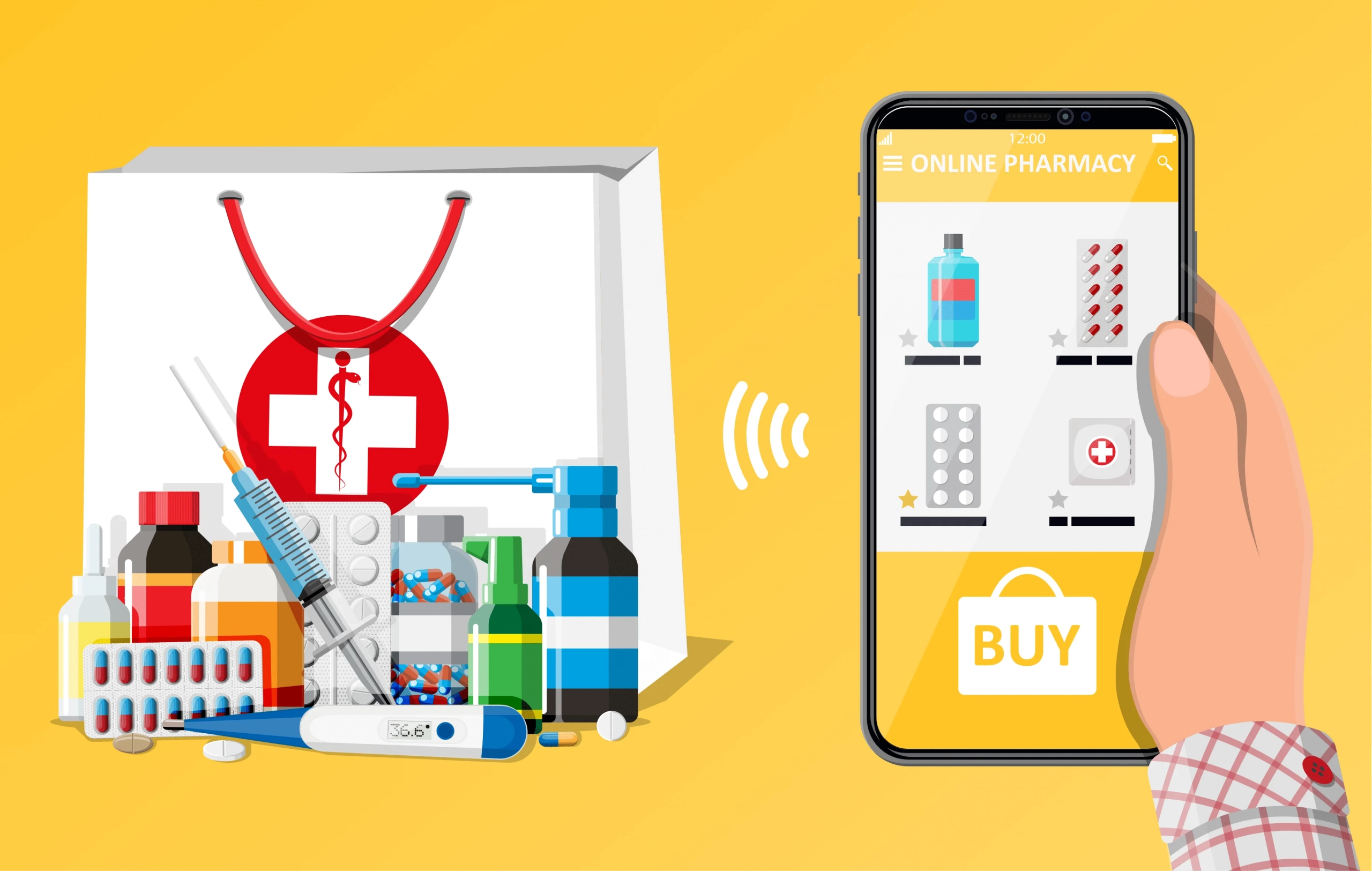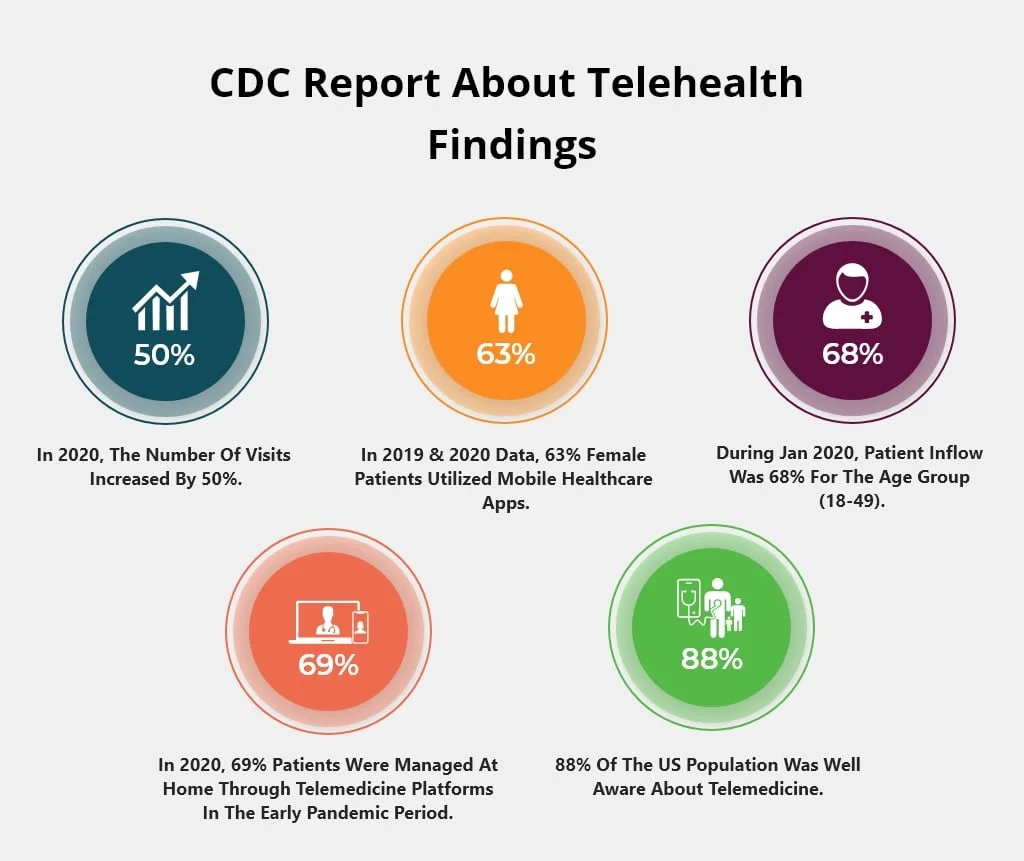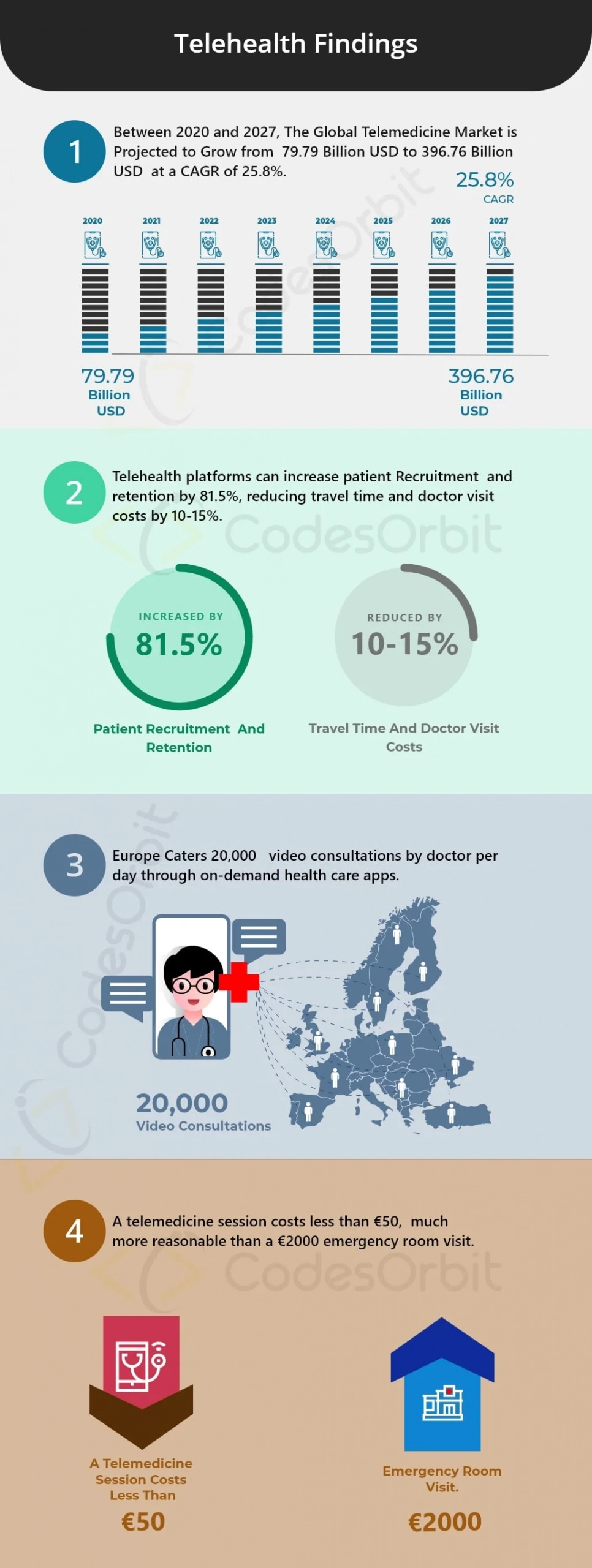The remarkable success of worldwide famous on-demand apps like Uber and FoodPanda makes anyone want to start their own on-demand business. But the very next moment, the number of companies already working and making the environment competitive disappoints you. Let us tell you one industry that could bring you as much revenue as food and transportation.
It is the healthcare industry. There was a time when the public didn’t seem to appreciate the idea of availing of health services online. But the global pandemic has changed their perspectives.
The on-demand healthcare business is now a practical idea. Rather than telling, let’s show its viability with statistics. In this article, we are going to discuss the profitability, stats and facts about the on-demand healthcare app business model in the healthcare industry.
How Big is the Healthcare App Market?
The market is vast. Let’s check how much businesses have put into and reaped out of this money-making industry.
1. The global advertising expenditure of healthcare companies is expected to increase to 4.3% in 2021. Such heavy advertisement investments indicate heavy sales. (Zenithmedia)
2. Healthcare advertising spending is expected to increase by 18% in 2021, in the United States. (Emarketer)
3. Global healthcare spending is expected to cross $10 trillion by 2022. (Policyadvice)
4. The global market of healthcare apps was valued at $8 billion in 2018 and is expected to reach $111.1 billion by the end of 2025, at a CAGR of around 38.26% between 2019 and 2025. (Globenewswire)
5. Mobile doctor apps made the fastest growing digital healthcare businesses with a massive 460% increase in market value between 2015 and 2018. This happened way before the pandemic. Imagine the heights these figures could reach in the post-covid world. (Odtap)
6. Health and Fitness apps set new global records during the week of March 22, 2020 (first wave of covid-19). The highest levels of both weekly downloads (59 million) and consumer spend ($36 million )was observed. In the coming sections, we will mention the individual revenues of some health on-demand apps. (Appannie)
7. According to PWC, investors have put $12.5 billion into digital healthcare ventures between 2017 and 2018. (PWC)
8. Statista says that the global market for mHealth (mobile health) devices in 2019 is $37 billion. (Statista)
9. As per Statista, the mobile health market will exceed 300 billion US dollars by 2025. (Statista)
10. The per-hour cost of a healthcare app developer in the USA is around 200 to 300 US dollars. (Appinventiv)
11. In Eastern Europe, this expense is down to around $150-$200, while in Asian nations like India the hourly cost of a developer is in the $60-$100 range. (Appinventiv)
12. 88% of healthcare appointments are scheduled by phone, as per a CNBC report of 2016. (CNBC)
13. 2.4% of healthcare appointments are scheduled online. Not having an online platform could make you miss a huge chunk of the audience. (Accenture)
How Global Pandemic Changed Telehealth Industry
Telehealth services have been there for a long time, though it was not one of the public preferences in the pre-pandemic world. Let’s find out how people shifted towards it and what their satisfaction levels are by examining some of the facts this comprehensive report brings to light, and some others as well.
Read more: On-demand Pharmacy App Development – Complete Guide
Telehealth Findings of Report by CDC (Centers for Disease Control & Prevention)
14. The number of telehealth visits increased by 50% in the first quarter of 2020. (CDC)
15. The report hints at the majority of women and girls in telehealth patients. The number of female patients was much higher (63%) in both 2019 and 2020 in telehealth patients. (CDC)
16. For persons aged (18-49), the number of telehealth visits increased from 68% during the first week of January 2020 to 73% during the last week of March. (CDC)
17. 69% of patients using telemedicine platforms during the early pandemic period in 2020 were managed at home. (CDC)
18. 12% of US adults did not seek any medical care during the pandemic, saying they were really unaware of telehealth options. That means 88% of people were totally aware of it back then. Obviously, this 88% would have increased by now. (CDC)
Other TeleHealth Findings
19. The global telemedicine market is projected to grow from USD 79.79 billion in 2020 to USD 396.76 billion in 2027 at a CAGR of 25.8%. (Fortunebusinessinsights)
20. According to a Forbes report from 2017, patients could save 100 minutes of their travel and wait time, as compared to in-person visits, with telemedicine. (Forbes)
21. Telehealth platforms can increase patient recruitment and retention by 81.5%. (Avelecare)
22. Telemedicine can reduce the costs of doctor visits by 10-15%. No wonder why the trend is so popular among hospitals and doctors as much as patients. (Getstream)
23. 67% of emergency room visits would be avoidable through the use of virtual consultations. (Unitedhealthgroup)
24. The telemedicine market of the Netherlands is expected to increase at a double-digit CAGR in 2020. (Prnewswire)
25. Every day, an average of 20,000 video consultations are being offered by doctors through on-demand applications in Europe. (Odtap)
26. A telemedicine session costs less than €50 which is much more affordable than a €2000 emergency room visit. (Odtap)
27. Cleveland Clinic Abu Dhabi completed more than 10,700 virtual consultations in March 2020 and the first ten days of April 2020. (Gulfnews)
28. As per a 2019 survey of 800 physicians, the adoption of telehealth solutions at clinics has risen by 340%, while 79% of the surveyed patients have shared positive feedback about these apps in another survey. (Appinventiv)
Input of Consumers in Telehealth – Are They Satisfied?
Consumer behaviors shape the trends in any industry. Medical consumers nowadays trust on-demand apps more than ever. They prefer to find an online presence of a hospital or doctor before getting in touch and read reviews before availing the services. Lets list down consumer-specific statistics. We will also share some stats about the importance of online reviews.
29. Consumers spent almost $2 billion on health and fitness apps in 2020. (Appannie)
30. The same figure for 2019 was $1.5 billion. (Appannie)
31. About 64% of U.S. adults regularly use an app to measure health metrics. Such a huge amount could make your target audience for an on-demand healthcare app. (Mobihealthnews)
32. 78% of the patients were happy to move away from their existing habits and use video consultation and this was before the COVID-19 outbreak in the United Arab Emirates, says a Telehealth report from UAE. (Odtap)
33. Five percent of Google searches are health-related. This little five percent makes up a big portion of e-commerce buyers. (Google Blog)
34. According to a DNM3 survey, 47% of people research doctors online, 38% try to find hospitals and medical facilities, and 77% book medical appointments. (DMN3 Survey)
35. In a survey conducted by American Telehealth company Well, 23% of the patients who delay seeking care for health problems just do it because it is a time-consuming process. Telehealth and on-demand health platforms would surely be no less than a blessing to them. (Forbes)
36. The same survey reveals that one in every five consumers will be glad to switch to a doctor who offers Telehealth Visits. (Forbes)
37. 69% of patients (response to the survey mentioned in previous two stats)say they will avail easy-to-use technology for telemedicine appointments if they get any. (Medicaleconomics)
38. An eBook published by Global Med, 74% of millennials prefer telehealth appointments over in-person visits. (Getstream)
39. 85% of patients who have used telehealth services are satisfied. (could not find resources). (MDPI)
40. Virtual consultations are as effective as in-person consultations, according to 59% of clinicians and 62.6% of patients, according to research by The American Journal of Managed Care. (Researchgate)
41. In another publication by the National Library of Medicine, 85% of telepsychiatry patients say they are happy to use a virtual environment. (National Library of Medicine)
42. Sixty percent of first-time users of telemedicine report no technical issue. (American Academy of Neurology)
43. Data from American Well shows that 84% of telehealth “visits” are successful. (Gomohealth)
44. Many HIPAA rules were waived in response to the global pandemic. The purpose was to expand how physicians can operate and treat their patients. The response from patients was also overwhelming.
A. 75% of patients say they will use telemedicine options for doctors they already know. (Medicaleconomics)
B. More than 50% said they will avail themselves of the option, even if the doctor is a stranger to them. (Medicaleconomics)
What is the Importance of Customer Reviews
45. 84% of consumers trust reviews as much as they trust word of mouth, says Inc article. (Inc)
46. Consumers read almost one to six reviews and form their opinion. (Inc)
47. To evaluate providers, 90% of customers use online reviews. (Softwareadvice)
48. The number of patients who reach out to the hospital website without search is three times lesser than those who land after search. (Thinkwithgoogle)
49. 44% of patients who research hospitals on a mobile device schedule an appointment. That makes it evident that only the website of your on-demand healthcare business is not enough. You definitely need a mobile app. (Thinkwithgoogle)
How Much On-Demand Healthcare Apps Are Making?
What could be the best criteria to find out if making an on-demand business app is a fruitful idea? Different people may have different opinions, but the success of already working apps could be the one most people will agree upon.
50. A popular San Francisco-based app Doctor on Demand observed a 50% rise in virtual visits in March 2020. (Odtap)
51. UK-based telemedicine company, Push Doctor, reported a 70% increase in weekly orders since the outbreak. (Odtap)
52. Amwell experienced more than a 1000% increase in virtual visits, the company’s CEO Roy Schoenberg told Healthcare Dive, ever since the pandemic broke out. (Healthcaredive)
53. The revenues of PlushCare have increased almost 12% from $133 million in 2020 to $158 million in 2021. (Fiercehealthcare)
54. Renowned application TelaDoc reports seeing Daily Virtual Visits up 50% during the COVID 19 outbreak. (Healthcaredive)
55. In April 2020, MDLIVE (health care on-demand app) reported that new individual user registrations have increased to approximately 20,000 per day. (MDlive)
56. Even before the pandemic, Doctor on Demand received $74 million in funding and recorded annual revenue of $12 million in 2019. (Imaginovation)
Conclusion
The need for on-demand healthcare has never been more than today in history. On-demand apps generating great revenues show that patient behaviors have changed. The public is well aware of telehealth and on-demand doctor apps. They use the internet to reach out to hospitals and medical professionals and the majority seem to be more than satisfied. Today is the best time to jump into the healthcare industry with a new on-demand healthcare app.


